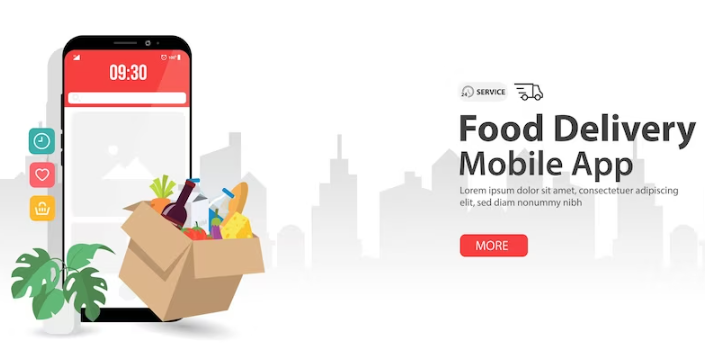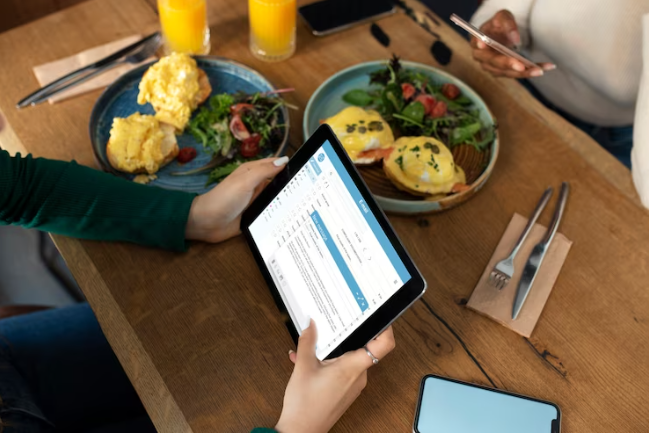Third-Party Platforms: Are you tired of cooking and craving a delicious meal from your favorite restaurant? Thanks to the rise of delivery services, you can now enjoy restaurant-quality food from the comfort of your home. However, with the increased demand for delivery, restaurants are facing new challenges and opportunities.
In this article, we will explore the latest trends in restaurant delivery, focusing on two key areas: ghost kitchens and third-party platforms. You will learn what ghost kitchens are and how they work, as well as the pros and cons of using third-party delivery services.
We will also discuss the impact of COVID-19 on restaurant delivery trends and how restaurants are adapting to meet the changing needs of customers. Finally, we will look at the future of restaurant delivery, including predictions and challenges for the industry.
So sit back, relax, and get ready to discover the fascinating world of restaurant delivery.

What Are Ghost Kitchens and How Do They Work?
If you’re curious about the latest trends in restaurant delivery, you may have heard about ghost kitchens. These are virtual restaurants that exist solely for the purpose of delivering food to customers. They are also known as dark kitchens, as they often operate out of hidden or unmarked locations.
Unlike traditional restaurants, ghost kitchens don’t have a physical dining area or storefront. Instead, they operate exclusively through online orders and third-party delivery platforms, such as Uber Eats, Grubhub, and DoorDash. This allows them to focus solely on the preparation and delivery of food, without the added expenses of maintaining a physical restaurant space.
In many cases, ghost kitchens are owned and operated by existing restaurant brands, who use them to expand their delivery capabilities and reach a wider audience.
The Pros and Cons of Third-Party Delivery Platforms
Let’s weigh in on the advantages and disadvantages of relying on third-party services for getting your food fix.
On one hand, third-party delivery platforms offer convenience and a wide range of options. You can order food from your favorite restaurant without leaving your home, and you can choose from a variety of cuisines and dishes. Moreover, these platforms often offer attractive deals and discounts, making eating out more affordable.
However, there are also some drawbacks to consider. One of the biggest concerns is delivery fees, which can be high and eat into your budget. Additionally, ordering through third-party platforms means your customer data privacy may be compromised. These companies collect and use your personal information for their own purposes, and you have little control over how it is used.
As such, it’s important to weigh the pros and cons carefully before deciding whether to use third-party delivery services.
The Impact of COVID-19 on Restaurant Delivery Trends
You’re probably well aware that the pandemic has drastically changed the way we eat, and with that, the way we order food. As lockdowns and restrictions kept people at home, the demand for delivery services increased significantly.
Restaurants that never offered delivery before had to adapt to the new reality and find ways to reach their customers. As a result, many restaurants started partnering with third-party delivery platforms to expand their reach and offer delivery services.
Moreover, customer behavior has also been affected by the pandemic. With many people working from home and spending more time indoors, the convenience of delivery services has become even more appealing. Customers are also more cautious about dining out and prefer the safety of having their food delivered.
As a result, the trend of ordering food online is expected to continue even after the pandemic ends. Restaurants that can offer delivery services or partner with third-party platforms will have a competitive advantage and be better equipped to meet the changing needs and preferences of their customers.
How Restaurants Are Adapting to the Rise of Delivery Services
Adapting to the rise of delivery services has been a challenging yet crucial task for many businesses during the pandemic, as they strive to meet the changing needs and preferences of their customers.
Online ordering has become an essential part of many restaurant’s delivery strategies, allowing customers to conveniently place orders from the comfort of their homes.
Restaurants have also had to adapt to the demand for contactless delivery, implementing measures such as curbside pickup and no-contact delivery to ensure the safety of their customers and employees.
To accommodate the increase in delivery orders, some restaurants have turned to ghost kitchens, also known as virtual kitchens or dark kitchens. These are cooking facilities that are solely dedicated to fulfilling delivery orders, without a physical storefront for customers to visit.
By utilizing ghost kitchens, restaurant owners can expand their delivery radius, increase their output, and streamline their operations.
Additionally, many restaurants are partnering with third-party delivery platforms, such as Uber Eats and Grubhub, to increase their visibility and reach more customers.
However, these partnerships come with fees and commission charges, which can significantly impact a restaurant’s profit margins.
Despite the challenges, adapting to the rise of delivery services has become a necessary step for restaurants to remain viable in the current market.
The Future of Restaurant Delivery: Predictions and Challenges
You may be surprised to learn that the future of food delivery is more than just convenience – it’s about sustainability and meeting the changing demands of consumers.
Delivery drones may soon become a common sight in the sky, delivering food orders directly to customers’ homes. This new technology not only saves time and money, but also reduces the carbon footprint of delivery services by eliminating the need for traditional delivery vehicles.
Another trend in the future of restaurant delivery is the rise of subscription-based meal services. These services offer customers a weekly or monthly delivery of pre-planned meals, eliminating the need for individual food orders and reducing food waste.
By providing customers with healthy, convenient meal options, subscription-based services are changing the way people think about food delivery and consumption. As the demand for sustainable and convenient food delivery options continues to grow, it’s clear that the future of restaurant delivery is about much more than just getting food from point A to point B.
Strategies For Building A Strong Online Community For Your Restaurant
Frequently Asked Questions
How do ghost kitchens affect the traditional restaurant business model?
Ghost kitchens can disrupt the traditional restaurant business model by reducing overhead costs and increasing profitability. However, competition with other ghost kitchens can be fierce, so it’s important to strategize and differentiate your offerings to stand out in the market.
What are the most common challenges faced by restaurants when using third-party delivery platforms?
When using third-party delivery platforms, common challenges include high delivery fees and lack of access to customer data. These issues can impact profitability and customer relationships, so it’s important to weigh the benefits and drawbacks carefully.
Are there any legal or regulatory issues that restaurants need to consider when partnering with third-party delivery platforms?
When partnering with third-party delivery platforms, you should consider data privacy and liability concerns. Ensure that your customers’ data is protected and that you are not held liable for any mishaps that occur during delivery.
How has customer behavior changed since the emergence of ghost kitchens and third-party delivery platforms?
Since the rise of ghost kitchens and third-party delivery platforms, customer behavior has shifted towards quicker and more convenient delivery preferences. However, customer satisfaction remains a priority for these services to retain their customers.
Will the rise of delivery services eventually replace traditional dine-in experiences for restaurants?
Do you prefer the convenience of delivery or the experience of dining in? Consumer preferences will ultimately determine whether delivery services will replace traditional dine-in experiences for restaurants.
Conclusion
So, what does the future hold for restaurant delivery services? The rise of ghost kitchens and third-party platforms shows no signs of slowing down, with more and more consumers opting for the convenience of delivery.
However, challenges remain, such as the high fees charged by third-party platforms and the need for restaurants to adapt their menus and operations to meet the demands of delivery.
Despite these challenges, technology is likely to continue to play a major role in the restaurant industry, with the development of new delivery platforms and the use of data analytics to better understand customer preferences.
Ultimately, the success of restaurant delivery services will depend on the ability of restaurants to adapt to changing consumer habits and preferences, while maintaining the quality and authenticity of their food.



